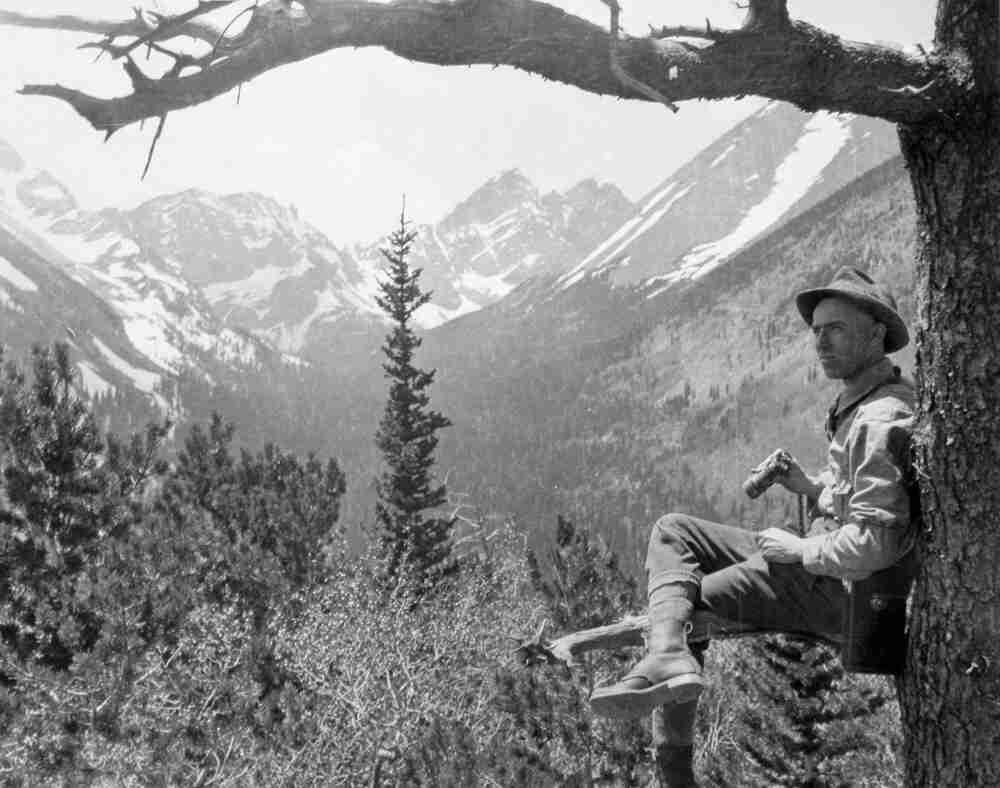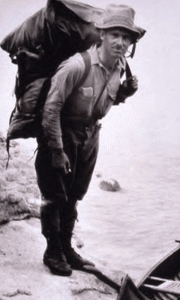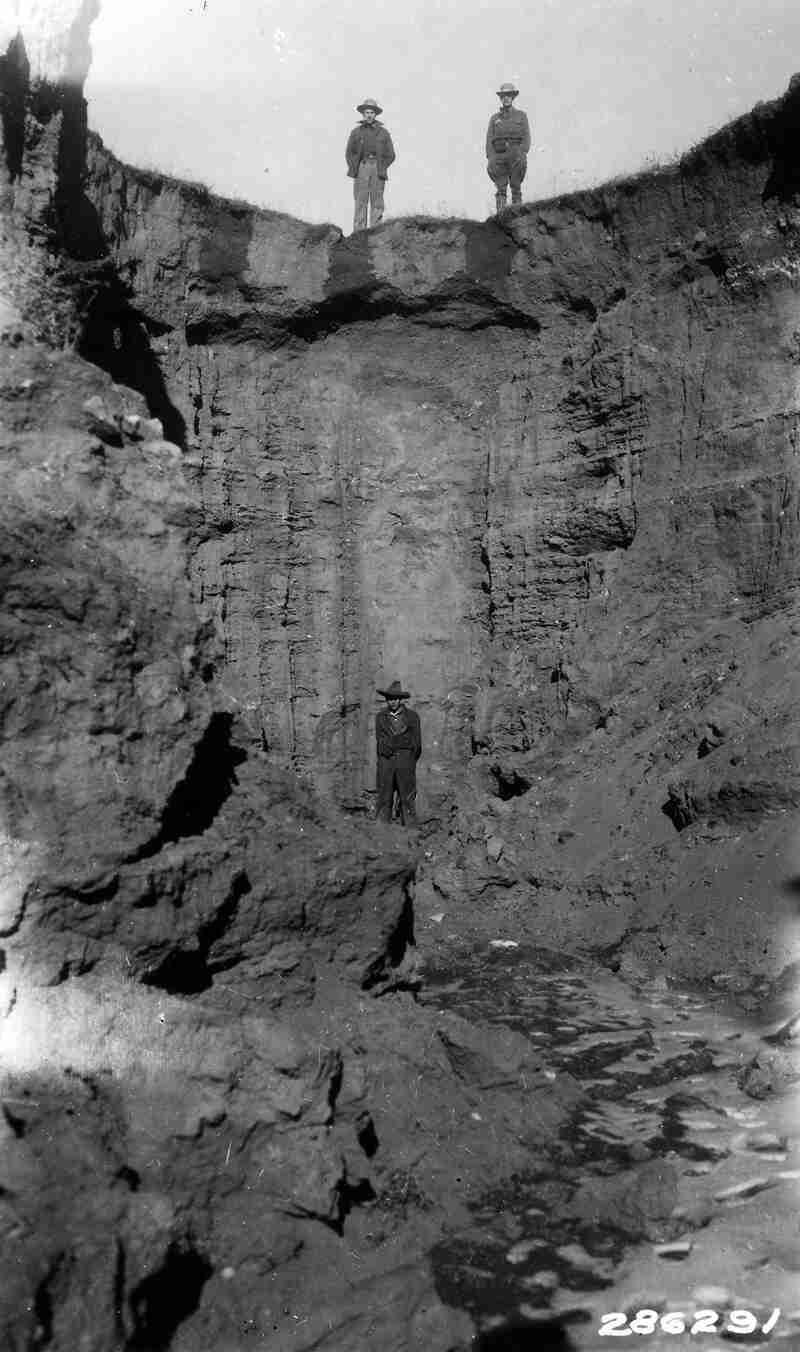US Forest Service in Colorado
Full Article
Colorado enjoys a proud public lands heritage and a prominent place in US Forest Service (USFS) history. The state hosts many of the first forests reserved under federal law, which today are some of the most popular destinations within the national forest system.
Origins
Following the removal of Indigenous people from Colorado’s plains and mountains in the late nineteenth century, Euro-American miners, stockmen, and settlers flooded into the territory. The increased population consumed natural resources at a rapid pace. As railroads connected the state to wider markets, the heightened demand for wood fueled rapid harvests of Colorado’s forests. After Colorado entered the Union in 1876, settlers alarmed by wildfires as well as wasteful logging practices and the excessive grazing throughout the Front Range called for action from the state.
Citizens interested in preventing natural resource abuse did not find a receptive audience in Colorado’s legislature, but the conservation idea was gaining traction at the federal level by 1891. On March 3 of that year, the US Congress reformed several land acts that were open to massive fraud and gave the president authority to “set apart and reserve” forests in any state that were on federally owned land. The act gave President Benjamin Harrison authority to create the first truly public forestlands in the world—forests that were set aside as bulwarks against wasteful private use and that would benefit all citizens. Harrison took advantage of the new power and quickly reserved millions of acres of forestlands in Colorado.
Harrison’s second reservation created the White River Plateau Timber Land Reserve, which today is the White River National Forest, the most visited national forest in the United States. Of the first ten forest reserves declared between 1891 and 1892, five were located in Colorado. No doubt the breathtaking scenery of the state’s Rocky Mountains, which famously inspired Katharine Lee Bates to write “America the Beautiful” in 1893 while visiting the Pikes Peak Timber Land Reserve, helped prompt the declarations.
When executive orders established the forest reserves in 1891, there was little scientific information on the natural resources contained within them. After the Forest Service was created in 1905 and the reserves were renamed national forests shortly thereafter, research became a critical focus of the nascent agency. In 1909 the Forest Service located its second forestry research station near Manitou Springs. From that station, agency scientists began work on the first comprehensive forest influence study undertaken in the United States, which established a benchmark of measurable data on how forests prevented erosion and floods and enhanced the landscape’s ability to retain greater amounts of moisture. This research influenced subsequent forest management around the United States as well as overseas.
Other Forest Service firsts abounded in Colorado, including the precursor to the modern wilderness area idea and movement. In 1919 the agency assigned its first landscape architect, Arthur Carhart, the task of surveying and making plans for an automobile loop and summer cabin development around Trappers Lake in the White River National Forest. While on his visit, Carhart was so impressed by the area’s natural beauty that he advocated against any recreation infrastructure. His idea that certain wilderness areas be saved from development and kept in as natural a state as possible successfully prevented development plans at Trapper’s Lake and constituted the basis of today’s wilderness preservation system.
Coloradans, however, did not universally embrace the reservation of millions of acres of public forests and grasslands in their state. Stockmen vehemently opposed federal control over valuable grazing lands and the establishment of a fee system to use national forests because it directly affected their economic interests. In protest, stockmen organized a test case in federal court to question USFS authority to regulate grazing in the national forests. Rancher Fred Light allowed his cattle herd to trespass onto the Holy Cross National Forest and was subsequently fined by the Forest Service. Light appealed the fine, and the Colorado legislature passed a special bill to cover his legal expenses as his case made its way on appeal to the US Supreme Court. In 1911 the high court ruled against Light and affirmed the Forest Service’s authority to manage the national forests.
Today
Today, the Forest Service continues to hold in trust over 16 million acres of forests and grasslands in Colorado and works to ensure their availability today and for future generations. The recreation possibilities are nearly boundless in this expanse. The many 14,000-foot peaks beckon adventurers of all stripes and are home to world-class ski resorts that attract millions of visits to the state each year. As the Rocky Mountains stretch into grasslands, the Forest Service protects other treasures, such as the internationally famous Picket Wire Canyon dinosaur track in southeastern Colorado.
The state’s forests also safeguard the water supply to fifty-four counties and 3.7 million Colorado residents. These lands are predicted to see steady increases in housing development near their borders and substantial increases in recreational visits. Climate change, drought, insect outbreaks, and wildfire all remind Coloradans that their forests are dynamic ecosystems that are constantly changing. Over a century of managing forests in Colorado, the Forest Service has learned that change is the one constant in forest management.
The future of forest conservation looks bright for Colorado. On February 19, 2015, President Barack Obama added to Colorado’s rich public forest heritage by designating 21,586 acres of pristine canyons, rivers, and backcountry forest in central Colorado as the Browns Canyon National Monument under comanagement of the Forest Service and the Bureau of Land Management.
List of National Forests in Colorado
| National Forest | Est. | Sq. Miles | Counties | Attractions | Accessible Via |
| White River | 1891 | 3,572 | Eagle, Pitkin, Garfield, Summit, Rio Blanco, Mesa, Gunnison, Routt, Moffat | 11 ski areas, 9 Fourteeners, Trappers Lake, Hanging Lake, Glenwood Canyon, Flat Tops Wilderness | Interstate 70, CO 13, US 40, US 24 |
| Grand Mesa | 1892 | 541 | Mesa, Delta, Garfield | Grand Mesa Scenic and Historic Byway, Grand Mesa, Battlement Mesa | Interstate 70, US 50, CO 65, CO 330 |
| Roosevelt | 1902 | 1,271 | Larimer, Boulder, Gilpin | Cache la Poudre Wilderness, Cameron Pass, Indian Peaks Wilderness, Comanche Peak Wilderness | CO 72, CO 119 |
| San Isabel | 1902 | 1,750 | Chaffee, Custer, Lake, Huerfano, Fremont, Pueblo, Saguache, Las Animas, Park, Costilla, Summit | Collegiate Peaks, Mt. Elbert, Mt. Massive, Independence Pass, Top of the Rockies Scenic Byway | US 285, US 24, CO 67 |
| Gunnison | 1905 | 2,612 | Gunnison, Saguache, Hinsdale, Delta, Montrose | West Elk Wilderness, Fossil Ridge Wilderness | US 50, CO 135, CR 76 |
| Pike | 1905 | 1,729 | Clear Creek, Teller, Park, Jefferson, Douglas, El Paso | Mt. Evans, South Park | US 285, US 24, US 50 |
| Routt | 1905 | 3,472 | Routt, Jackson, Rio Blanco, Grand, Moffat, Garfield | North Park, Cameron Pass, Hahn's Peak, Steamboat Springs | US 40, CO 14, CR 129, CR 64, CR 12, CR 16 |
| San Juan | 1905 | 2,936 | Archuleta, Conejos, Dolores, Hinsdale, La Plata, Mineral, Montezuma, Rio Grande, San Miguel, San Juan | Chimney Rock National Monument, Durango-Silverton Narrow Gauge Railroad | US 550, US 160 |
| Uncompahgre | 1905 | 1,492 | Montrose, Mesa, San Miguel, Ouray, Gunnison, San Juan, Delta | Million Dollar Highway, Lizard Head Wilderness, Mt. Sneffels Wilderness, San Juan Skyway | US 550, CO 145, Nucla-Delta Road |
| Arapaho | 1908 | 1,130 | Grand, Clear Creek, Gilpin, Jackson, Jefferson, Summit | Byers Peak Wilderness | Interstate 70, US 40, CO 9, CO 6, CO 103 |
| Rio Grande | 1908 | 2,906 | Saguache, Mineral, Conejos, Rio Grande, Hinsdale, San Juan, Alamosa, Archuleta, Custer | South San Juan Wilderness, Rio Grande River Headwaters, Stony Pass | US 285, US 160, US 84 |



















